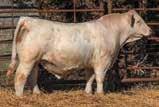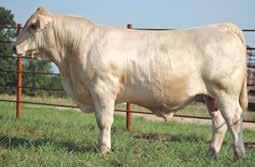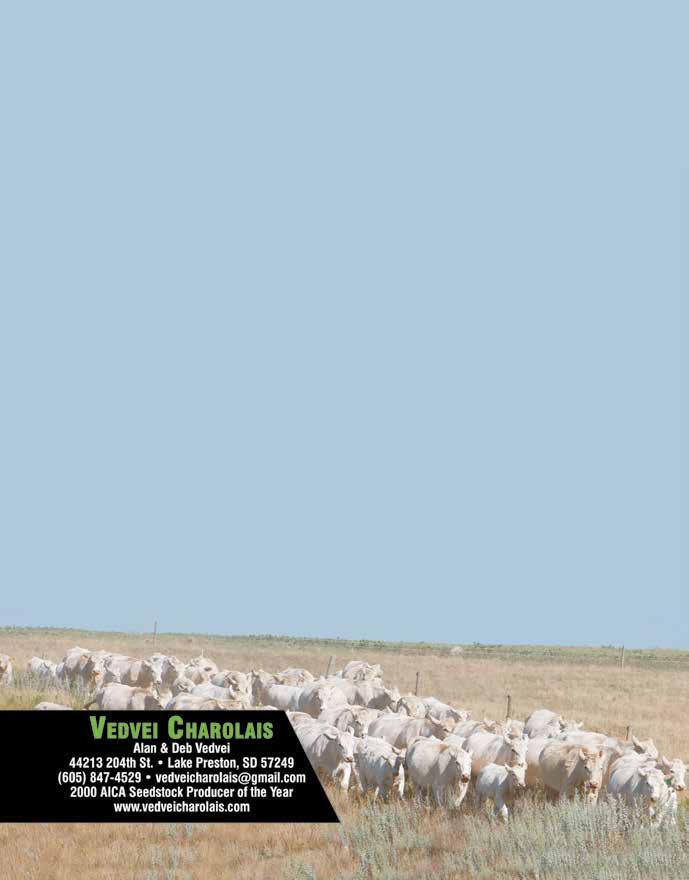







Rogers Bar HR’s focus is on Charolais. Our program is designed to produce the best Charolais in the breed. We are the largest breeder in the South, and one of the oldest breeders in the country. We have been performance testing to produce only the best Charolais for over 60 years. Let us put our bloodlines to work for you and your operation.
Proven Performance:
• Our bulls have won more BIF Certified rate of gain tests than any other Charolais breeder
• Winner of the University of Florida Bull Test for the 3rd year in a row!
• 2022 Florida Bull Test - #1 out of 94 bulls gaining 5.92 lbs/day
• SEVEN Rogers Bar HR bulls in the top 10 placing 1st, 2nd, 4th, 6th, 7th, 8th, and 9th!
• Be it grass or grain, our bulls will put on the pounds for you
• More pounds, more money!
True Forage Based Program:
• Bulls are not creep fed
• Weaned bulls are not put in a grow yard - they are developed on GRASS (bermuda, bahia, and ryegrass)
Resilient:
• Our bulls are bred in the South, raised in the South, and they will work for you in the South
• The heat and humidity of the South will not slow these bulls down
• They will not melt on you during the summer
• Rogers Bar HR bulls do not need an adaption period - they just do their job with no additional pampering
2023 Fall “ Turn-Out”
Charolais Bull Sale
Saturday, October 21, 2023
2024 Spring “Turn-Out”
Charolais Bull Sale



Saturday, February 24, 2023

P.O.
rogersbarhr@hotmail.com
We



We’re




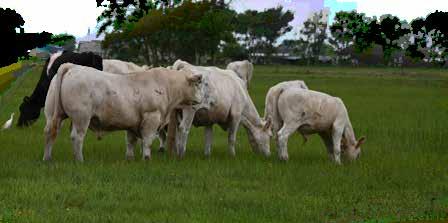


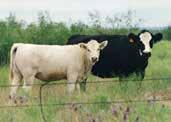


ASSOCIATION STAFF
(816) 464-5977
Executive Vice President Dr. Clint Rusk • ext. 101 crusk@charolaisusa.com

Vice President of Operations David Hobbs • ext. 200 dhobbs@charolaisusa.com

Director of Junior Activities Kaitlyn Chism • ext. 201 kchism@charolaisusa.com
Recording Secretary Maggie Smithee • ext. 400 msmithee@charolaisusa.com
Communications & Events Coordinator Samantha Corn • ext. 102 scorn@charolaisusa.com
Controller Chris Kendall • ext. 300 ckendall@charolaisusa.com
FIELD STAFF
Northeast Representative Call the AICA office for Information. (816) 464-5977
David Hobbs (913) 515-1215
North Central Representative Hadley Schotte (785) 562-6632
hschotte@Charolaisusa.com
Southeast Representative Floyd Wampler (423) 612-2144 fwampler@charolaisusa.com
Southwest Representative Cody Beck (765) 719-1622 cbeck@charolaisusa.com

West Representative Clint Sexson (541) 609-0167
clint.sexson@msn.com
Assistant Manager Molly Schoen • ext. 104 mschoen@charolaisusa.com
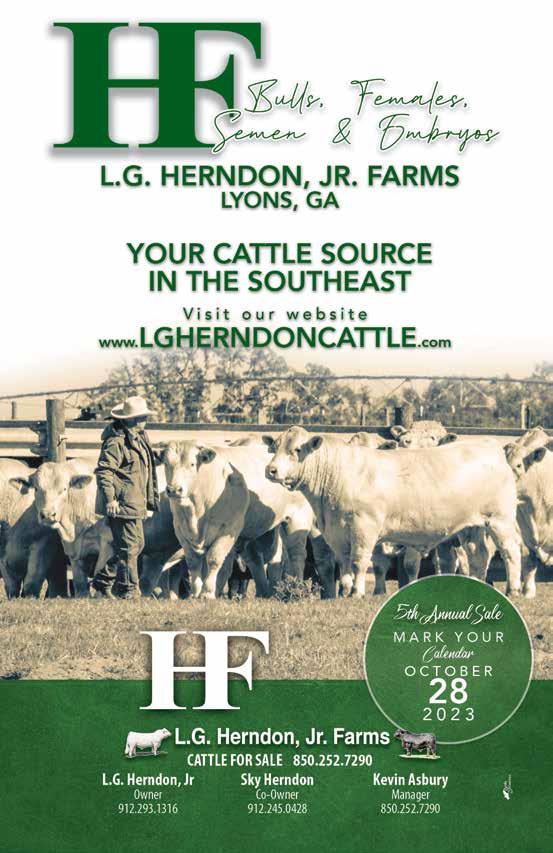














Dr. Troy Rowan from the University of Tennessee says, “Crossbreeding is our industry’s last free lunch”! And yet, less than 50% of the commercial cattle herds in the U.S. are utilizing crossbreeding. One of the important lessons I learned in my high school Vocational Agriculture class was, “If you’re not crossbreeding, you’re leaving money on the table.” As a frugal young man, that message resonated with me. Our Ag teacher was talking specifically about commercial cattle breeders, who predominantly sell their cattle by the pound. When cattle breeders utilize a two, three or four breed crossbreeding system, they are taking advantage of the benefits of heterosis (also called hybrid vigor) that results from crossing two or more breeds of livestock. Animal breeders understand that heterosis improves lowly heritable traits like fertility, health, immune function, longevity and lifetime production. Said another way, heterosis is inversely related to heritability. The lower the heritability of a trait, the more impact heterosis will have on that trait.
Direct heterosis pays! Economic and production benefits associated with heterosis are documented by decades of industry-wide research in commercial crossbreeding systems. Maternal heterosis also pays. The following data validates the increased performance of the crossbred cow relative to the average of straightbred females of the parental breeds: 38% increase in longevity, 25.3% increase in cumulative weaning weight produced over the lifetime of the cow, 17% increase in the number of calves produced over the lifetime of the cow, 3.8% increase in weaning weight, and 3.7% increase in calving rate due to improved fertility.
Crossing two breeds results in hybrid vigor in the resulting calf crop. In fact, heterosis is maximized in the F1 cattle. If these F1 (first generation) crossbred heifer calves are kept as replacements and bred to a third breed, the cattle producer has now added retained heterosis through the crossbred dams, who are the result of crossing two breeds. Utilizing a four-breed crossing scheme will maximize retained heterosis, but a simple three-breed crossing system will produce almost as much retained heterosis as a four-breed system, and the crossing of three breeds is less complicated.
For example, if you own a commercial herd of Angus cows, you can breed your yearling heifers to low-birth-weight Angus bulls to produce replacement heifers for your Angus herd. You might even choose to use gender selected semen if you decide to synchronize and A.I. your yearling heifers in order to increase the percentage of heifer calves produced by your first calf heifers. Once your heifers have had their first calves, they should now be approximately two years old. You can now breed these two-year-old Angus females to Hereford bulls to make black-baldie calves. Once the black-baldie heifers are two years old, you can breed them to a third breed. Admittedly biased, I suggest you use Charolais bulls on your two-year-old black-baldie females. The resulting progeny will be smokie colored calves who are healthier, more fertile and grow faster than straight bred commercial calves. If you keep the smokie heifer calves as replacements, you can breed them to low-birth-weight Angus bulls for their first calf and then cross them with Charolais bulls for their 2nd, 3rd and 4th calves.
DIRECT HETEROSIS PAYS! ECONOMIC AND PRODUCTION BENEFITS ASSOCIATED WITH HETEROSIS ARE DOCUMENTED BY DECADES OF INDUSTRYWIDE RESEARCH IN COMMERCIAL









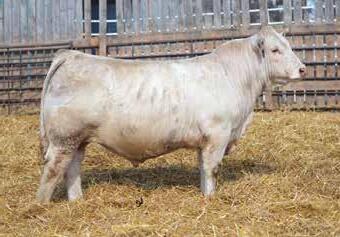

Friday October 20, 2023 - Meadows Creek Farm 13th Annual
Arcadia Black & White Bull Sale
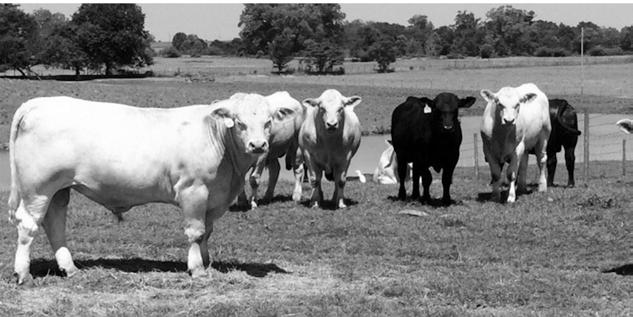
Arcadia Stockyard, Arcadia, FL
Will also sell Charolais x Angus, Brahman & Sim x Angus Bulls
Friday December 1, 2023 - Meadows Creek Farm 18th Annual
Mid State Stockyards, Letohatchee, AL
Will also sell Charolais x Angus & Sim x Angus Bulls
Saturday February 17, 2024 - Meadows Creek Farm 8th Annual
South Alabama Stockyard, Brundidge, AL
Will also sell Charolais x Angus & Sim x Angus Bulls and Registered Charolais Females






1 – Meadows Creek Farm
Richard & Glenn Meadows
4421 Co. Rd. 33 N. • Columbia, AL 36319
Richard (334) 797-4870 cell
Glenn (334) 797-5808 cell
www.meadowscreekfarm.com
(see page 25)
2 – MOGO Farms LLC
Daniel Hammond 15300 Co. Rd. 2 Florence, AL 35633 (256) 740-1114
mogofarmsllc@gmail.com
(See page 2)
3 – Plyler & Son
Caleb, Briana & Huck Plyer
1748 Hempstead 7 • Hope, AR 71801 (870) 703-1394
calebplyler@hotmail.com
Facebook: Plyer-Son-Charolais
(see page 7)
4 – Leachman Cattle of Colorado
2056 West Co. Rd. 70 Fort Collins, CO 80524 (970) 568-3983
Lee Leachman, CEO
Jerrod Watson, Bull Customer Service (303) 827-1156
Aaron Rasmussen, Cowherd Advisor (308) 763-1361
Kurt Schenkel, Cowherd Advisor (740) 503-6270
www.leachman.com
(See Page 11)
5 – L.G. Herndon Jr. Farms
1035 Hwy 56 West • Lyons, GA 30436
L.G. Herndon, Jr., Owner (912) 293-1316
bo@vidaliasfinest.com
Sky Herndon, Co-Owner (912) 245-0428
sky@vidaliasfinest.com
Kevin Asbury, General Manager (850) 252-7290
kasbury397@gmail.com
www.lgherndonjrfarms.com
(see page 5)
6 – Lone Pine Charolais
Benjamin McLendon
546 Ben Roy McLendon Road
Lyons, GA 30436
(912) 293-2968
www.lonepinecharolais.com
Facebook:lonepinecharolais
(see page 25)
7 – Argabright Charolais
Michael D Argabright
1154 Co Road 60
Olpe, KS 66865 (620) 794-5049
margabright@usd252.org
8 – Schrader Ranch
Spencer, Laci, Weston & Josi Schrader 2118 Oxbow Road Wells, KS 67467
(785) 488-7204 Spencer (785) 488-2135 Home Schrader@twinvalley.net www.schraderranch.com
(see pages 31)
9 – Bradley Cattle
Bruce & Jana Bradley PO Box 165 Marshfield, MO 65706 (417) 848-3457 cell brucembradley@hotmail.com
(see page 25)
10 – Mead Farms
21658 Quarry Lane • Barnett, MO 65011
Alan Mead, Owner (573) 216-0210 Office (573) 302-7011
Scott Wall, Manager (309) 212-5450
meadangus@yahoo.com
www.meadfarms.com
(see page 32)
11 – Peterson Farms Charolais
Steve & Sandy Peterson
8767 Outer Road • Mtn. Grove, MO 65711
(417) 926-5336 • (417) 259-1493
www.PetersonFarmsCharolais.com
petersoncompany@centurytel.net
(see page 29)
12 – Rogers Bar HR
Doug Rogers
PO Box 1718 • Collins, MS 39428 (601) 765-8848 • (601) 765-7751 cell rogersbarhr@hotmail.com
www.rogersbarhr.com
Facebook: RogersBarHR
(see page 1)
13 – Rifle Creek Cattle Co.
Riley & Stephanie Seda
42241 Rifle Creek Rd.
Anselmo, NE 68813
(308) 749-2553 Ranch
(308) 880-0828 Riley
(308) 880-0681 Steph riflecreekcattleco@gmail.com
www.riflecreekcattlecompany.com
Facebook: riflecreekcattle
(see page 27)
14 – Rennert Ranch
Kristian & Becky Rennert
11168 746 Rd.
Elm Creek, NE 68836
Kristian (308) 440-9463
Becky (903) 563-9177
rennertranch@gmail.com
www.rennertranch.com
Facebook: Rennert Ranch
15 – Schnuelle Ranch
Gabe & Nichole Schnuelle 101 Curtiss Street
Jansen, NE 68377
(402) 520-4871 Cell
(402) 754-4000 Home schnuelleranch@hotmail.com
www.schnuelleranch.com
(see page 14)
16 – Bill King Ranch
P.O. Box 2670
Moriarty, NM 87035
(505) 220-9909 Bill King bill@billkingranch.com
Tom Spindle, Foreman (505) 321-8808
www.billkingranch.com
Facebook: billkingranch
(see page 30)
17 – Romans Ranches Charolais
Bill Romans Family
3820 Old Stage Rd.• Harper, OR 97906
Jeff (541) 358-2905
romansranches@hotmail.com
www.romanscharolais.com
Facebook: Romans-Ranches-Charolais
(see page 6)
18– Keppen Charolais & Families
Steve, Myrna, Greg & BJ Keppen
405 Samara Ave. • Volga, SD 57071 (605) 627-5229• (605) 690-0680 cell keppenchar@valleyfibercom.net
www.keppencharolais.com
(see page 13)
19– Vedvei Charolais Ranch
Alan & Deb Vedvei
44213 204th St. • Lake Preston, SD 57249 (605) 847-4529 • (605) 860-1135 cell vedveicharolais@gmail.com www.vedveicharolais.com
(see Back Cover)
20 – Wienk Charolais Ranch
44210 205th St. • Lake Preston, SD 57249
Jeff Eschenbaum (605) 860-0505 cell
Sterling Eschenbaum (605) 203-0137 cell
Stetson Eschenbaum (605) 203-2040 cell
Ty Eschenbaum (605) 203-1082 cell
charolaisbulls@outlook.com www.wienkcharolais.com
(see Inside Front Cover)
21 – Bar J Charolais
Larry Ludeke
P.O. Box 186 • Liverpool, TX 77577
Also: Sulphur, LA (832) 439-4666 Larry cell larryl@qiminc.com www.barjcharolaisfarm.com
(see page 3)
22 – Bradley 3 Ranch, Ltd.
15591 Co. Rd. K
Memphis, TX 79245
James Henderson (940) 585-6171 Cell
Mary Lou Bradley – Henderson (940) 585-6471 Cell
Minnie Lou Bradley
jwhenderson@bradley3ranch.com
www.bradley3ranch.com
(See Page 9)
23 – RAMRO LLC/RJ Cattle Co.
2975 Lazy Lane Blvd.
Houston, TX 77019
Cuero, TX
(713) 204-4903
(713) 253-4804
(See page 27)
24 – Thomas Charolais, Inc.
P.O. Box 595 • Raymondville, TX 78580
Mitch Thomas (956) 535-0936
Tonnyre Thomas Joe (956) 535-0942
thomasra@gte.net
www.thomascharolais.com
(see page Inside Back Cover)
Canada
25– Scott Stock Farm Ltd.
Jonathan & Camille Scott P.O. Box 1541
Crossfield, Alberta T0M 0S0
(403) 333-1790
scottstockfarm@gmail.com
www.scottstockfarm.com
(See page 10)
SERVICES
Gallagher USA
www.am.gallagher.com
1-800-531-5908
(see page 24)
Legacy Custom Meat Processing
4315 E SH-71
LaGrange, TX 79845
(979) 249-2571
www.legacycustommeatprocessing.com
(see page 3)
Priefert www.priefert.com
1-800-527-8616
(see page 28)
There aren’t too many scenes that’ll make a commercial cattle producer – and their banker – prouder than looking at a growthy, stout, smoky calf standing almost as tall as his black or baldie mama. The picture can change depending on the location of the ranch – he might be looking at the same scale-busting calf next to a good tiger-striped mama down south.
Either way, producers have long known that capitalizing on the magic of heterosis compounded with the use of a terminal-breed sire is a profitable way to max out the scales at weaning, as yearlings or fat cattle. With the nation’s Jan. 1 beef cow inventory hitting one of the lowest numbers seen in recent history due to widespread drought, it is more important than ever for the commercial rancher to take advantage of a bullish market predicted for calves and feeders over the next few years.

With a much smaller herd and the need to go slow with restocking as the land recovers from drought – hopefully before the next one hits – every pound will count. Unfortunately, the market is set up today based on premiums for black-hided cattle and given that the cattle cycle has been in the heavysupply stage, where every segment after the ranch has enjoyed the ability to be choosey, it has meant good cattle of all colors don’t always get sold for the value they bring to the industry at every stage.
It’s a problem Charolais seedstock producers are not willing to deal with any longer. So much so that the American-International Charolais Association has created a task force of progressive breeders and outside consultants to explore every possible opportunity to make sure their commercial bull buyers get additional or new market access for their calves.
“Numerous closeout sheets from Charolais-influenced cattle harvested at Tyson plants in the past two years document these cattle produce carcasses that compete extremely well on the rail,” says AICA Executive Vice President Clint Rusk. “It is imperative this carcass value be reflected in the live market.”
Charolais breeders are not alone in their quest to fix the problem.
“Our task force is already working with another task force led by Tom Brink, chief executive officer of the Red Angus Association of America, to explore a change in the way feeder cattle are marketed,” Rusk explains. “Our Charolais breeders agree with those who say feeder cattle should be marketed on their genetic merit rather than the color of their hide.”
Last year, Brink released an important white paper with results of a survey of feedlot managers that shows they also see a great need for change in the feeder
cattle market. When asked if black-hided feeder cattle are superior to nonblack cattle of equal weight, sex and health history, 75% disagreed with that statement.
In fact, 92% of the survey participants agreed or strongly agreed with this statement: “For the beef industry to continue improving its overall cattle quality and value, hide color should be replaced with more objective genetic criteria as a key price-determining factor(s) in the U.S. feeder cattle market.” What will it take to make those changes so smoky or cream-colored calves can get premiums for their performance? For the Charolais task force, all options are on the table, from feeder cattle marketing programs, better utilization of existing grids for Charolais-influenced cattle, data gathering from private sources to solidify how these cattle excel in terms of feed efficiency, average daily gain and overall performance at the feedlot and packer in terms of both red meat yield and quality grade on the rail.
They are working on getting Charolais-influenced cattle into the latest sustainability research projects to study their efficiency advantages relative to other breeds. If carbon capture and greenhouse emissions play a role in the future of beef, breeders on the task force believe the breed’s natural efficiency and performance will be a competitive advantage in that arena.
The task force has met with major packing company executives to determine how Charolais-influenced cattle are perceived on their end and what the association can do to help increase demand for the cattle at the retail level. They’ve also initiated discussions on private branding with meat marketing experts.
Basically, these breeders are reaching out to every segment of the industry to lay groundwork leading to a premium structure for Charolais-influenced cattle at the commercial level. Charolais-influenced cattle are already wellliked in the industry. Ranchers appreciate the cattle for their performance, feeders love them for their efficiency and packers value their cutability, ability to grade Choice or better, as well as putting more product in the box. The task for these seedstock folks is to find ways to capture the real-world value of Charolais-influenced calves.
Marcine Moldenhauer is one of the industry experts AICA has tapped to advise the task force. She has experience both as a breeder of Charolais, Red Angus and Maine-Anjou, 25 years in cattle procurement as a cattle buyer, strategic supply manager and leading the premium sales and marketing team for a major packer. For the last 15 years as owner of Meatlink Management, LLC, her livestock and meat business consulting firm, she has worked with multiple companies in multiple countries, breed associations, chefs and specialty fed cattle beef programs on the challenges and how to approach creating and supplying a branded beef program.
“Packers know the value of Charolais-cross cattle, they do cutting tests, they track performance, they know,” she explains. “They know Charolaiscross are going to yield from live to carcass and from carcass to the box; the packers know these cattle have very favorable quality grades with low yield grades. They know these cattle are a good value. However, because over the
last 10 years or so there have been plant closings and increased supply, the packers have simply not had to pay more for these types of cattle.”
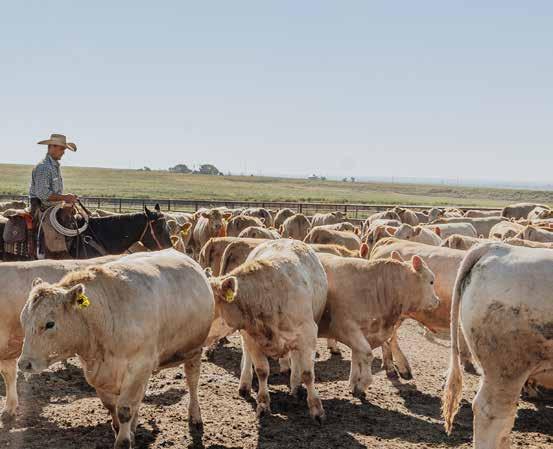
For years, USDA has only recognized “Angus” as 51% black hided, those cattle that are percentage Angus (red or black), have not been accepted into “Angus” brands, such as black-nosed Charolais or the blonde-hided cattle. She believes in order to compete with that, it’s necessary to cultivate either a foodservice, retail or a small restaurant partner – better yet one of each – that understands the value and sees an opportunity for them.
“This is why Cargill, for one, created their Sterling Silver brand over 25 years ago,” she adds. “The other challenge is to create multi-tiered brands where Charolais-cross cattle that are USDA Select or higher all have a home in a branded beef program. You want multiple programs for the Charolaisinfluenced cattle to go into. The reality is the packer is not going to find your customer for you, that will be the breed’s job.”
One of the breeders on the task force is Brett DeBruycker of Montana, who says the Charolais association is up for the challenge.
“We’re being very aggressive in fleshing out the different opportunities,” he says. “I think the association is refocusing on what is most important to our business, and that is the commercial cattle producer. I’ll admit we fell behind in promoting what our breed can do.
“For instance, I have documentation that pink-nosed, straightbred Charolais cattle qualified for the following premiums in the summer of 2022. Steers received $80/head and heifers received $85/head on the U.S. Premium Beef grid. These cattle added value to the industry by grading and yielding well on the rail,” he adds.
“You’ve got to hand it to Angus, they were out helping packers sell meat, spending money as an association talking to retailers while we, as a breed, were focusing on breed improvement and adding value to our customers and the industry through increased performance, efficiency and carcass quality,” DeBruycker adds. “Hindsight being 2020, we should have been helping packers sell Charolais beef. One of the things I have learned on this task force is how vitally important it is for our breed to talk to consumers.”
A few years ago, he took a phone call from a gentleman from France who recently moved to Washington state. The man was very excited to have found DeBruycker Charolais online because he had been looking for Charolais beef since moving to the U.S. The man told him in France, Charolais is considered a delicacy and everybody there wants to eat it. DeBruycker says more U.S. consumers would share that fondness for beef from the white breed if they
got a chance to taste it and know where it came from.
Mark Nelson is also advising the Charolais task force, and he too has seen the other side of the business having ran the Angus America program for Cargill for seven years. He says part of what the breed needs to keep its eyes on is being ready for the future, when the cattle cycle turns again and cattle numbers are on the rise.

“I think in the next five years, ranchers will benefit from high prices due to short supplies,” he says. “But we all know those high prices won’t last. So, the breed needs to have something up and running on all cylinders by then so folks with Charolais-cross calves will be able to use them when they really need them. There is so much potential with this breed. Charolais is the kingpin of what they do. The cattle have really been begging for their breeders to do something like this because the cattle merit it.”
So, from a commercial perspective what does this mean for their Charolais-influenced calves being born now? It means those white bulls in the pasture will bring home gold for you now by putting extra pounds on the scale when every pound is likely to be worth much more than it has been when cattle numbers were high. And, if the Charolais task force does the job it hopes to accomplish, you’ll have not just more pounds to sell in the future but also more premiums and demand for those high-performing calves. Stay tuned.
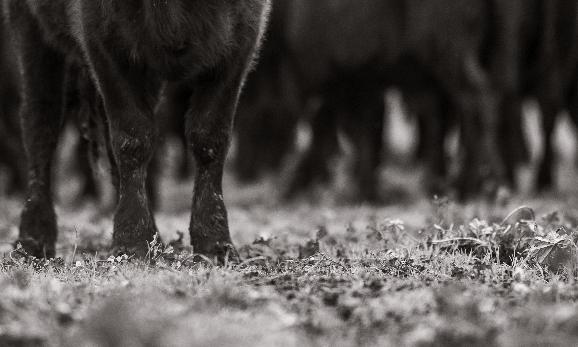











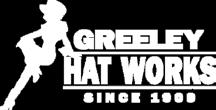








• Quality performance bulls in volume
• Bulls also available private treaty
• 200+ Head Cowherd
• Feedlot data from our commercial herd

• Proven Bloodlines
• Show heifer prospects and female packages available private treaty


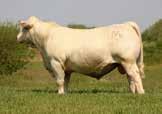
• Customer Satisfaction





